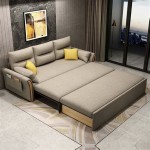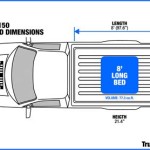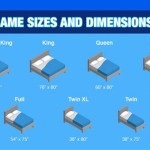Camper King Size Bed Dimensions: A Comprehensive Guide
The allure of the open road and the freedom of camper van travel are increasingly popular. A critical aspect of comfortable camper van living is a good night's sleep. For couples or individuals who appreciate extra space, a king-size bed in a camper is a desirable luxury. However, fitting a king-size bed into the limited space of a camper requires careful planning and consideration of dimensions.
This article provides a comprehensive guide to camper king-size bed dimensions, exploring standard sizes, potential variations, and factors that influence the feasibility of installing such a bed in a camper van. It also discusses alternative sleeping arrangements and strategies for maximizing space in a camper design.
Understanding Standard King Size Bed Dimensions
The term "king size" is a general descriptor and while there are accepted standard dimensions, slight variations can occur depending on the manufacturer. In North America, a standard king-size bed measures approximately 76 inches wide and 80 inches long. This translates to 6 feet 4 inches in width and 6 feet 8 inches in length. These measurements are crucial to consider when planning the layout of a camper van conversion.
It is important to distinguish between a standard king and a California king. A California king is narrower but longer, typically measuring 72 inches wide and 84 inches long. While a California king might seem more appealing due to its narrower width, the additional length can pose challenges in a camper van setting, potentially hindering walkway space or cabinet placement.
European king-size bed dimensions also differ. A common European king-size mattress measures approximately 160 centimeters wide and 200 centimeters long, which translates to roughly 63 inches wide and 79 inches long. This is significantly narrower than the North American standard king. When sourcing mattresses or bedding in Europe, or when importing a camper van from Europe, these dimensional differences must be taken into account.
The depth or thickness of the mattress is another factor influencing space utilization. Thicker mattresses provide more comfort but occupy more vertical space. When designing a bed platform or considering storage underneath the bed, mattress thickness becomes a vital measurement.
Factors Influencing the Feasibility of a King Size Bed in a Camper
The wheelbase and overall dimensions of the camper van heavily dictate the feasibility of installing a king-size bed. Longer wheelbase vans, such as extended-length Sprinter vans or Ford Transit models, offer more internal space, making it easier to accommodate a larger bed. Shorter vans necessitate more creative solutions and often compromise on other features to accommodate a king-size sleeping area.
The interior layout design is paramount. A transverse bed configuration, positioned across the width of the van, is the most common approach for accommodating a king-size mattress. However, this requires a van with sufficient interior width. Many vans, even larger models, may not have the necessary width to comfortably fit a standard king-size bed while still allowing for wall insulation and interior paneling.
The placement of other camper van features, such as the kitchen area, bathroom, and seating, will impact the available space for a bed. A dedicated sleeping area might require sacrificing space in other areas. Carefully evaluating how these elements interact is crucial during the design phase.
Wheel well intrusions inside the camper van also significantly impact bed dimensions. These intrusions narrow the available space at the floor level, potentially limiting the placement of the bed platform or requiring custom modifications. Careful measurement and planning are essential to work around these structural limitations.
The need for storage beneath the bed further influences required dimensions. Raising the bed platform to accommodate storage requires additional vertical space and may reduce headroom within the camper. The type of storage, whether it is drawers, open shelving, or large compartments, also affects the platform height and overall design.
Alternative Sleeping Arrangements and Space-Saving Strategies
If a full king-size bed proves impractical, several alternative sleeping arrangements can offer similar levels of comfort while optimizing space. One option is a split king bed, consisting of two twin XL mattresses placed side by side. This configuration offers flexibility, allowing each person to adjust their side of the bed independently, and can be easier to maneuver within the camper van.
Another possibility is a custom-built bed that utilizes every available inch of space. This may involve creating a platform that fits snugly around wheel wells or incorporating built-in storage compartments. Custom mattresses can also be fabricated to unconventional dimensions, maximizing the sleeping area while minimizing wasted space.
Fold-away or Murphy beds offer a space-saving solution by concealing the bed against a wall when not in use. This frees up floor space during the day, transforming the sleeping area into a living area. However, installing a Murphy bed requires careful planning and structural reinforcement to ensure its safe and reliable operation.
Alternatively, loft beds can be constructed to elevate the sleeping area above other camper van features, such as a seating area or kitchen. This maximizes vertical space and frees up valuable floor space. However, loft beds require climbing and may not be suitable for individuals with mobility limitations.
Inflatable mattresses offer a portable and space-saving alternative, although they may not provide the same level of comfort and support as a traditional mattress. These mattresses can be easily deflated and stored when not in use, freeing up significant space within the camper van.
Employing multi-functional furniture is another crucial space-saving strategy. For instance, a seating area can be designed to convert into a smaller bed, or a table can be folded down to create additional floor space. This approach maximizes the utility of each area within the camper van.
Maximizing storage efficiency is also vital. Utilizing vertical space with shelves and cabinets, and employing organizers to keep items neatly stowed, can reduce clutter and create a more spacious feel, even if the bed size is limited.
The choice of mattress material significantly impacts both comfort and space utilization. Memory foam mattresses conform to the body and provide excellent support but can be bulky. Latex mattresses are more breathable and durable but can be heavier. Hybrid mattresses combine the benefits of both memory foam and innerspring coils, offering a balance of comfort and support.
Finally, thorough planning and meticulous measurements are essential for successfully incorporating a king-size bed or any alternative sleeping arrangement into a camper van conversion. Creating detailed floor plans, considering the dimensions of all features, and accounting for potential obstacles will help ensure a comfortable and functional living space.

Rv Mattress Sizes And Dimensions With Cutout Guide

Rv Mattress Sizes Guide Dreamcloud

Rv Mattress Sizes And Dimensions Guide

Rv Sheet Sizes Rvs Campers And Truck

Rv Mattress Sizes And Types Explained Nectar Sleep

Rv Mattress What You Need To Know Before Replacing Your

King Size Camper Mattress New Arrivals
King Bed Upgrade Size Wander The West

Winnebago Motorhomes With King Sized Beds

How We Sleep Comfortably In Our Pop Up Camper The Princess








